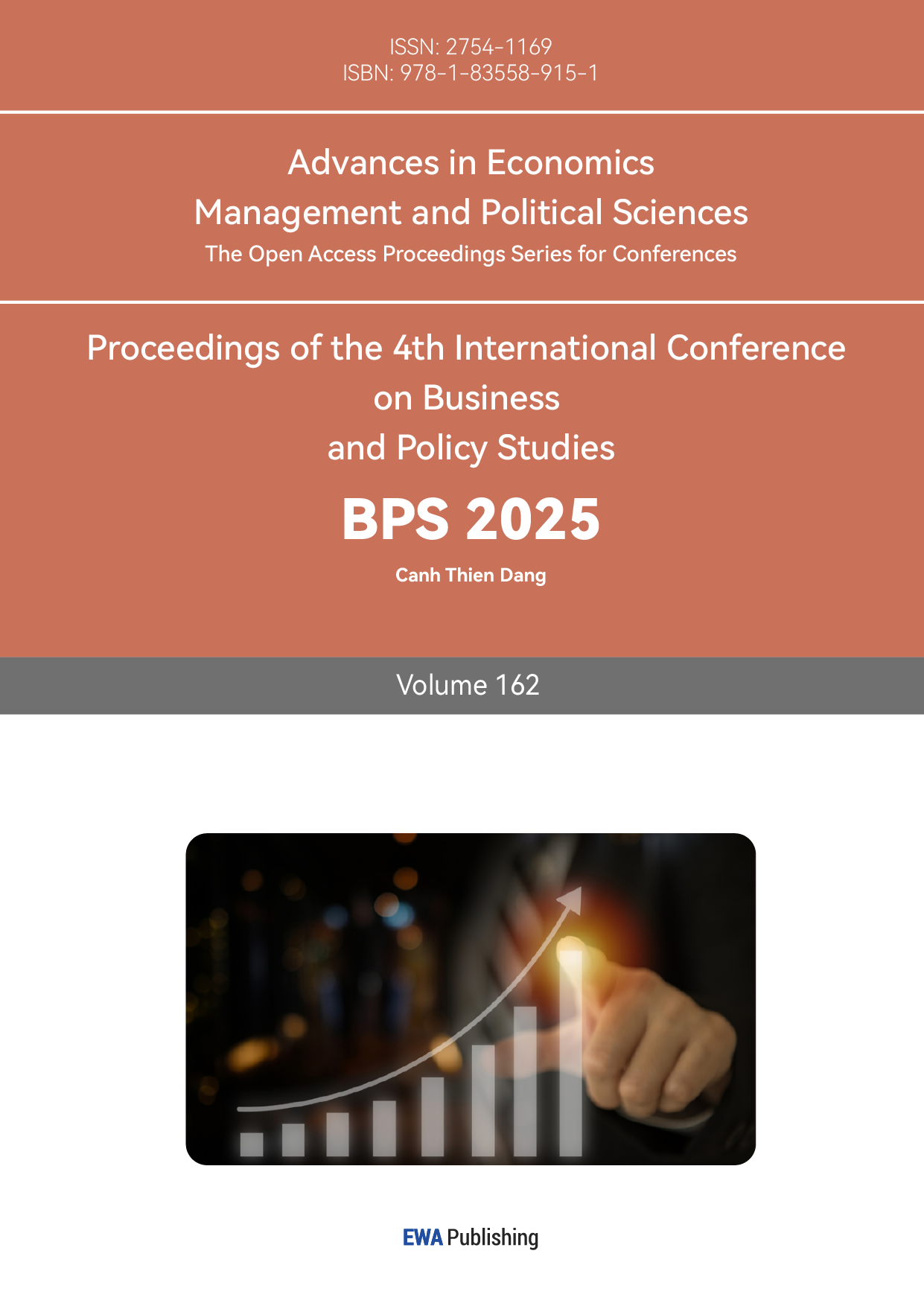1.Introduction
In recent years, China's cultural and creative industry has developed rapidly. Among the emerging brands, the Palace Museum cultural and creative brands have become the benchmark and model because of their high sales and brand awareness, and its unique and excellent brand building methods are also worth learning from other cultural and creative brands. According to the "Analysis and Suggestions on the Positioning and Marketing Strategy of the Palace Museum's Cultural and Creative Products" released on the official website of the Palace Museum, since its official operation in October 2010, the brands’ Taobao store has been praised more than 50,000 times, with a praise rate of 99.38%, and more than 60,000 times of collection popularity [1].
In the past, the research of cultural and creative brands mainly focused on brand positioning and strategy, product design and innovation, marketing and promotion, internationalization and localization. Most of the existing studies focus on a single product or a specific market, and lack a systematic review of the diversified layout strategy of cultural and creative brands, especially the diversified product layout of the Palace Museum cultural and creative brands, which cannot fully reveal the specific impact mechanism of this strategy on the construction and development of the brands. At the same time, most of the existing studies focus on theory and case analysis, and few empirical studies focus on the online stores of those relevant brands, and the research conclusions lack theoretical verification supported by data.
This study uses a combination of questionnaire survey and case analysis, combines with the collected quantitative and qualitative data, and conducts a comprehensive analysis of the diversified product lines, market performance and feedback of consumers by searching for a series of relevant literature and inspecting the online stores sales of the Palace Museum culture and creative brand, so as to deeply summary the diversified product layout strategy and its impact of its brand building.
The relevant research results not only fill the gap in the research on the layout of diversified products of the brand, but also provide a new perspective and experience to develop other cultural and creative brands.
2.Literature Review
To improve their goods and services, the cultural and creative sectors have expanded and integrated with scientific and technical advancements in recent years. A strong basis for promoting the transformation and innovative development of cultural and creative industries is provided by China's active promotion of creative and cultural change as well as innovative growth [2]. Rich historical and cultural meanings and a wealth of resources are found in museums. By digging deep and exploiting the museum's own cultural advantages, it can design and develop products popular with the public [3]. Unlike traditional commodities, culture and creative products have different qualities. Production is no longer the primary emphasis of operations management and product design. Furthermore, cultural and creative enterprises (CCEs) frequently have a variety of creative product portfolios and adaptable, cooperative integration techniques, which lead to variations in productivity and, eventually, impact company value creation [4]. At the same time, product portfolio management is also an effective marketing strategy to meet the heterogeneous needs of consumers, manage organizational budget constraints and maintain market competitive advantage [5]. However, the past research rarely focused on the diversified product layout of the cultural and creative industry, and there is a lack of relevant data about the operation of cultural and creative brands as support.
Under the motto "Let cultural relics come alive," the Palace Museum, a pioneer in cultural and creative products fields, has spearheaded the transformation of cultural products recently [6]. With the excellent diversified product layout, the Palace Museum culture and creative brand has made its online store sales grow and won a high praise rate. This article will take the operation of this online stores as an example to explore the impact of diversified product layout on the building of cultural and creative brands.
In addition to satisfying the spiritual and cultural demands of modern society, the quick growth of the cultural and creative sector is also helping museums financially, which has important implications for the sustainable development of the museum. By promoting cultural products, the museum can avoid financial difficulties and improve its environment and operating conditions [7]. These products are homogeneous and lack creativity as a result of an unequal level of development and a shallow exploration of cultural connotations. Furthermore, the commercialization of cultural materials may lead to cultural distortion, vulgarization, and meaning loss [8]. This study can make up for the research gap in the diversified product layout of brands, improve the theoretical system of shaping cultural and creative industries, provide a new perspective for the sustainable development of cultural and creative brands in the Palace Museum, and promote the building of other brands.
3.Research Method
To guarantee the comprehensiveness and scientific nature of the study, this study used a combination of questionnaire and case analysis. The combination of multiple survey methods can make up for the various deficiencies of a single survey method, and also provide more data sources for the research, so that the research conclusions are more real and powerful.
Through the analysis of some representative case of products of the Palace Museum cultural and creative brand’s online stores, case analysis analyzes the specific factors affecting the development of the brand, thus summarizes the main performance of diversified product layout of the brand, explain the related connotation of each performance, and finally summarizes the influence of the diversified product layout for the Palace Museum cultural and creative brand on brand building and development. The investigation way for research provides more practice and data basis, making the research not just stop at the level of theoretical research.
The respondents of the survey are mainly for consumers of all ages (Under 18 - over 46 years old), because expanding the age range is conducive to collecting more comprehensive and real data information, making the analysis results more representative. A total of 14 questions are set in the questionnaire, most of which are multiple choice questions and slider questions. Such question design can make the data more intuitive and facilitate the post-production of related data charts. The main contents of the questionnaire include three aspects: recognizing the cultural and creative products of the Palace Museum, and asking consumers about the characteristics of the products sold in the online stores; investigating whether consumers are satisfied with the products; investigating consumers' views on the diversified product layout of the brand. Combined with the purpose of the study and various data collected in the early stage, the author conducted two pre-surveys, and revised the questionnaire for many times based with the survey results.
After completing the questionnaire, the author through online platform program issued 150 questionnaires, and complete the collection of the questionnaire in one week. By filling in the questionnaire time (greater than or equal to 45 seconds), the author screened out 130 valid questionnaire and divided the target group into five levels: under 18, 18-25, 26-35, and 56 above according to age. The author takes certain samples from each level, made statistical analysis of the relevant data mainly through descriptive analysis, and finally knew the consumers' cognition of the cultural and creative products, the purchase behavior and situation, as well as the evaluation of the diversified layout.
According to the characteristics of this study and demand, the author also collected from the brand’s Taobao online store product data, including product types, product sales, product use evaluation. These data reflects the product characteristics, consumer preference and demand, product popularity, authenticity and universality, so the author can use these data as a sample, detailed study of the concrete expression of diversified product layout.
4.Research Finding
According to the data collected at present, the diversified product layout of the Palace Museum cultural and creative brand is reflected in three aspects: diverse product types, exquisite product design, creative products, and targeted product launch.
4.1.Diversification of Products
Following the results of the questionnaire, respondents who had bought the products in the brand’s online store scored the richness of the products, with an average score of 83.85, proving that the richness of the cultural and creative products of the Palace Museum has been recognized by consumers.
4.1.1.Wide Variety and Large Number of Products
The online flagship store of the brand divides all its products into 13 categories, with product lines covering stationery, clothing, household goods, digital products, art, collectibles and other fields, and each category also contains a large number of different products. Taking the classification of "Palace Museum Stationery" as an example (Table 1), the products in this category not only include the common school supplies in daily life, but also include some derivative stationery gift box sets, such as pen gift boxes and colored ink sets, with a total of more than 100 pieces of different products. Similar diversity is also significant in other categories, which fully reflects the creativity and breadth of the brand’s products.
Table 1: Statistics of the number of "Palace Museum Stationery" series products
|
Kind |
Jotter |
Seal Sticker |
Pen Ruler Eraser |
Bookmark |
Pen gift box |
Color ink suit |
Pen container |
Paper file |
|
|
Quantity |
22 |
18 |
15 |
36 |
2 |
1 |
7 |
3 |
A total of 104 cases |
4.1.2.Broad and Reasonable Price Setting
The price range of products in the online store covers a wide range (Table 2), including exquisite high-end collections of several thousand yuan and exquisite small gifts of a few yuan. Such diversified pricing strategy enables consumers at different income stages to buy the desired products in the brand’s online store, realizing the true inclusiveness and universality of cultural and creative products, and further enhancing the market competitiveness and brand influence of the cultural products.
Table 2: Statistics of products with different price ranges of the Palace Museum
|
Price range |
The interval description |
Type of production |
|
0.01-50 yuan |
Low price range |
Member gifts, greeting cards, handbags, red envelopes, refrigerator stickers, stationery, ornaments, toys, etc |
|
51-200 yuan |
Medium and low price range |
Toys, suits, ornaments, dressing mirrors, backpacks, art cups, blind boxes, key chains, clothing, fans, etc |
|
201-500 yuan |
Medium price range |
Blind boxes, jewelry, tea sets, clothing, cosmetics, hand strings, tableware, gift boxes, etc |
|
501-1000 yuan |
Medium and high price range |
Gold jewelry, reproduced famous painting decorations, etc |
|
1001-3000 yuan |
High price range |
Pendant (jade, gold), tea set, etc |
|
3001-5000 yuan |
Deluxe price range |
Antique collection, tea sets, etc |
4.2.Creative Product Design
Purchases of the museum's creative products and culture are positively impacted by perceptions of innovation and experience value. Visitors to the Palace Museum will purchase related goods if they think their cultural and innovative product design is innovative [9]. Consistent with the above research results, the products of the online store are very innovative and have successfully attracted a large number of consumers to buy them. According to the relevant data of the questionnaire, consumers who have bought products of the online store scored the creativity of their products, and 95 people gave high scores (above 80 points), with an average score of 84.31.
4.2.1.Rich in Traditional Cultural Elements
The design of the cultural and creative products of the Palace Museum integrates traditional cultural elements and modern aesthetics. For example, the portable makeup mirrors and colorful bookmarks in online stores, which apply the unique classical pattern elements of the Palace Museum to modern ornaments and daily necessities, make the products have both cultural charm and practicality.
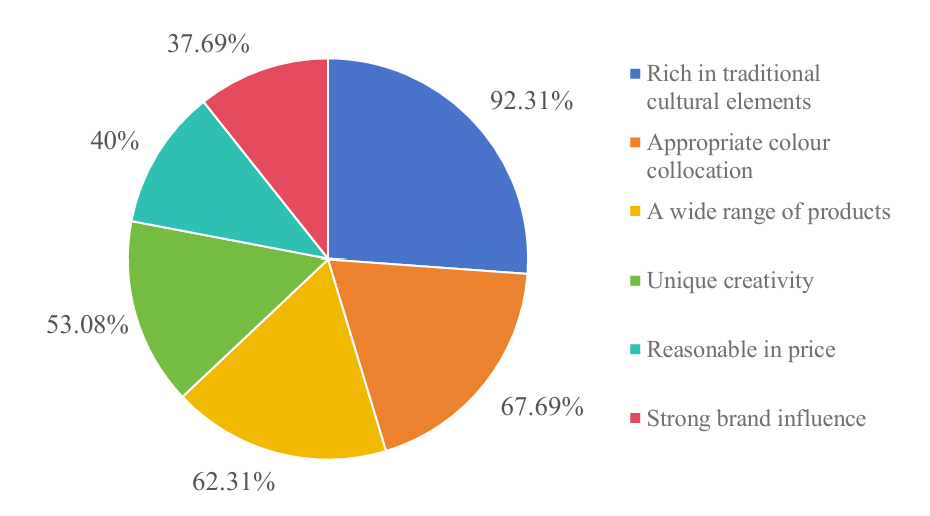
Figure 1: Respondents' views on the characteristics of the cultural and creative products of the Palace Museum
According to the questionnaire data collected (Figure 1), about 90% of the respondents believe that the most attractive part of the brand's products is "rich in traditional cultural elements". Specifically (Figure 2), more than 90% of the respondents specifically mentioned the palace cultural elements, such as dragon and phoenix patterns and palace colors; more than 60% of the respondents expressed high recognition of the traditional festival elements, which fully proves the excellent performance of the brand’s products in the richness of traditional cultural elements.
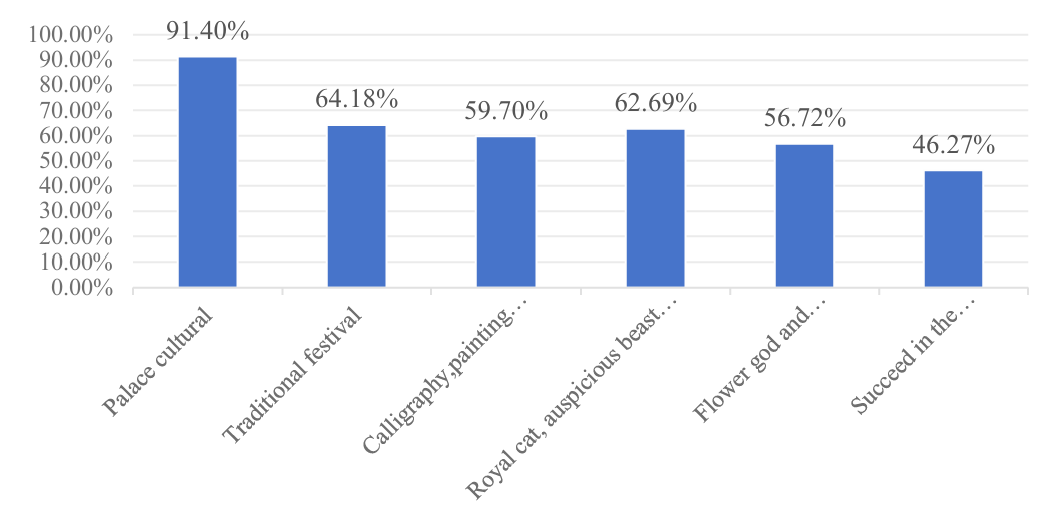
Figure 2: Cultural elements that consumers think in the cultural and creative products of the Palace Museum
4.2.2.Unique Color Collocation
In addition to the rich traditional cultural elements, the unique color collocation of the products is also a highlight of the cultural and creative products of the Palace Museum. Compared with other brands, the cultural and creative products of the Palace Museum not only inherit the solemnity and elegance of the traditional palace color, which is mainly traditional colors such as vermilion, sapphire, golden yellow, but also combine the current popular color design, forming a traditional and fashionable cultural and creative style. One of the most typical example is the "lights" lipstick series products, which combines the red wall of the palace yellow tile color and modern gradient design. The series highlights the highlights the solemn and profound cultural characteristics of the Forbidden City, conforms to the aesthetic taste of contemporary young consumers, and reflects products of the brand in the use of color superb skills. In the questionnaire survey, the respondents scored the color matching of a highly sold product of the brand, and more than 80% of them gave a high score of more than 85, which can be seen that the products of the Palace Museum were relatively successful in color matching.
4.3.Targeted Launch of Products
4.3.1.For Consumers of Different Age Groups
According to the demand of people of different ages, the Palace Museum Cultural brand adopts a hierarchical strategy to design the product that meets their aesthetic needs and needs [10]. For example, it launches key chains, cases, cosmetics for young consumers (18-28) years old; it launches different styles of tea sets, jewelry, incense and other products for middle-aged consumers (29-45). And it launches the health hammer, sleeping blanket, silk scarves and other products for older consumers (46 and above). Moreover, according to the data of the questionnaire, the different kinds of products mentioned above are all selected by consumers, and the numerical distribution is relatively uniform (Figure 3). This result shows that brand’s products has successfully attracted consumers of different ages.
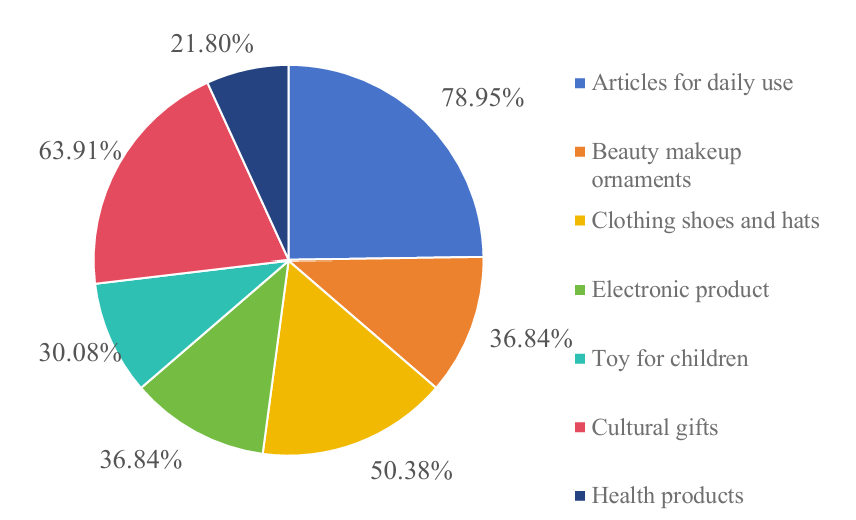
Figure 3: Types of cultural and creative products that respondents may buy
4.3.2.For Different Festivals and Special Themes
In terms of product development, the Palace Museum closely combines different festivals and themes. It not only launches several festival-themed products on special days such as Spring Festival, Mid-Autumn Festival and National Day, but also develops themed products such as "Royal Cat Series" and "Thousand Rivers and Mountains Series". According to the questionnaire data, more than 80% of the respondents showed a satisfactory attitude towards the design of the brand’s products in terms of festivals and theme products. This results show that the brand has made remarkable achievements in the development of festivals and theme products, and has successfully attracted the attention and love of consumers.
5.Research Discussion
Through questionnaire survey, social media survey and data analysis, it is found that the diversification of the Palace Museum Cultural Innovation in terms of product types, product design and product theme can not only improve consumers 'purchase intention and satisfaction, enhance consumers' stickiness, but also enhance the market competitiveness and influence of the brand. This finding fits with the previous diversification and performance theory, which holds that the benefits of diversification outweigh the costs, have a positive impact on the performance of the organization, and a strategic instrument for attaining strategic relevance and impromptu performance is diversity [11].
Research shows that the online stores of the brand have many product categories, and the average sales volume of each type of product is more than 1,000. This shows that through the targeted launch of diversified exquisite products, the brand has successfully segmented the market and met the diversified needs of consumers of different ages, thus expanding the sales of online stores and enhancing the market competitiveness. At the same time, according to the survey data, the rich cultural connotations of the brand’s products have been recognized by the vast majority (more than 90%) of respondents, which also significantly improves consumers' purchase intention and brand loyalty to the brand.
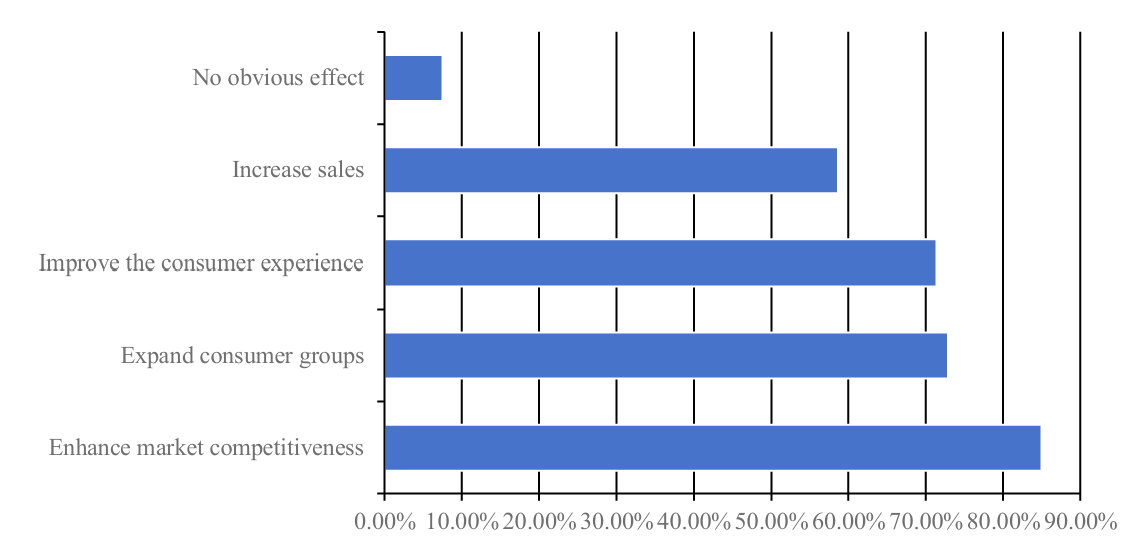
Figure 4: Respondents' views on the diversified product layout of the Palace Museum
Compared with previous studies, this study further verified the positive effect of diversification of cultural and creative products on brand development through the relevant data collected. For example, more than 80% of the respondents believe that diversified product layout can improve consumer stickiness, more than 75% of the respondents believe that diversified product layout can enhance brand market competitiveness (figure 4), and it further proves that product diversification of the cultural institutions can significantly enhance brand awareness and consumer loyalty. Furthermore, this study finds that the innovative layout of the Palace Museum's cultural and creative products in festivals and themed products significantly improves consumers' willingness to buy, which is consistent with the view in the festival marketing theory that festival-themed products can stimulate consumers' purchasing motivation.
6.Conclusion
This study finds that the diversified product layout of the Palace Museum cultural and creative brand is mainly reflected in three aspects: diverse product types, creative product design and targeted product launch, and this strategy has a huge impact on the brand building and development of the brand. Therefore, other cultural and creative brands can also follow the example of the Palace Museum, build diversified product lines, explore the cultural connotation of the brand and apply them to the products, and regularly launch new products, so as to enhance the market competitiveness and influence of the brand.
This study summarizes the main manifestations of diversified product layout, explains its influence on cultural and creative brand building, makes up for the research gap in the diversified product layout, and improves the theoretical framework of cultural and creative brand building. Through the in-depth investigation of product sales, consumer purchase behavior and market feedback, this study also provides strong data support for the brand building of the Palace Museum cultural and creative brand , and provides a scientific basis for its future product development and promotion. Meanwhile, through the analysis of the typical case of the brand, this study also extracts a series of experiences and strategies for cultural and creative brand development, which provides replicable and useful reference and new perspective for the development of other cultural institutions, thus enhancing the market competitiveness of the whole cultural and creative industry.
However, the limited questionnaire sample size of this study and the lack of a qualitative analysis of the deep psychological motivation of consumers may not represent the opinions of all consumers. Based on the above research limitations, future research can be carried out by expanding the sample size and sample diversity, and combining with multiple interviews to deeply explore the emotional identity and cultural identity mechanism of consumers for the brand.
In the future, the cultural and creative products of the Palace Museum should pay attention to the changing market environment and consumer demand, continue to optimize the product layout, and constantly launch new cultural and creative products combined with the continuously developing digital technology and artificial intelligence technology, so as to maintain the continuous competitiveness and cultural vitality of the brand.
References
[1]. Zhang, X. (2024) Analysis and Suggestions on the Palace Museum’s Marketing Strategy and Positioning in Cultural Creation Market,2023.10.24, 2024.11.18, https://www.dpm.org.cn/research_talk/252191.html
[2]. Cui, L. et al. (2024) Research and Design of Cultural and Creative Industries in the Qinba Mountains of Southern Shaanxi. Results in Engineering, 22, 101956.
[3]. Shi, B., and Zhou, G. (2019) Analysis on Advantages and Influencing Factors of Design and Development of Museum Cultural & Creative Products. IOP Conference Series: Materials Science and Engineering. IOP Publishing, 573(1).
[4]. Liu, X., Liu, P., Li, M. (2024) Factors Influencing Value Co-creation in Cultural and Creative Enterprises: An Empirical Study. Heliyon, 10(15).
[5]. Kirca, A.H., Randhawa, P., Talay, M.B., et al. (2020) The Interactive Effects of Product and Brand Portfolio Strategies on Brand Performance: Longitudinal Evidence from the US Automotive Industry. International Journal of Research in Marketing, 37(2), 421-439.
[6]. Wen, J. (2021) Brand and Communication Strategy of Cultural Creative Products in New Media Era of the Palace Museum in Beijing, China. Learning & Education, 10(9), 147-148.
[7]. Li, Y., Jie, L. (2022) The Influence of Design Aesthetics on Consumers’ Purchase Intention toward Cultural and Creative Products: Evidence from the Palace Museum in China. Frontiers in Psychology, 13, 939403.
[8]. Huang, H., Chen, H., Zhan, Y. (2023) A Study on Consumers’ Perceptions of Museum Cultural and Creative Products through Online Textual Reviews: An Example from Palace Museum’s Cultural and Creative Flagship Store. Behavioral Sciences, 13(4), 318.
[9]. Li, Z. et al. (2021) Innovative or Not? The Effects of Consumer Perceived Value on Purchase Intentions for the Palace Museum’s Cultural and Creative Products. Sustainability, 13(4) 2412.
[10]. Wu, X., Liu, J. (2024) Research on the Extension Strategy of Cultural and Creative Brands. Time-honored Brand Marketing 16, 9-11.
[11]. Oladimeji, M.S., Udosen, I. (2019) The Effect of Diversification Strategy on Organizational Performance. Journal of Competitiveness, 11(4), 120.
Cite this article
Bao,Y. (2025). The Impact of Diversified Product Layout on Cultural and Creative Brand Building: Take the Operation of the Palace Museum Cultural and Creative Brand’s Online Stores as an Example. Advances in Economics, Management and Political Sciences,162,46-54.
Data availability
The datasets used and/or analyzed during the current study will be available from the authors upon reasonable request.
Disclaimer/Publisher's Note
The statements, opinions and data contained in all publications are solely those of the individual author(s) and contributor(s) and not of EWA Publishing and/or the editor(s). EWA Publishing and/or the editor(s) disclaim responsibility for any injury to people or property resulting from any ideas, methods, instructions or products referred to in the content.
About volume
Volume title: Proceedings of the 4th International Conference on Business and Policy Studies
© 2024 by the author(s). Licensee EWA Publishing, Oxford, UK. This article is an open access article distributed under the terms and
conditions of the Creative Commons Attribution (CC BY) license. Authors who
publish this series agree to the following terms:
1. Authors retain copyright and grant the series right of first publication with the work simultaneously licensed under a Creative Commons
Attribution License that allows others to share the work with an acknowledgment of the work's authorship and initial publication in this
series.
2. Authors are able to enter into separate, additional contractual arrangements for the non-exclusive distribution of the series's published
version of the work (e.g., post it to an institutional repository or publish it in a book), with an acknowledgment of its initial
publication in this series.
3. Authors are permitted and encouraged to post their work online (e.g., in institutional repositories or on their website) prior to and
during the submission process, as it can lead to productive exchanges, as well as earlier and greater citation of published work (See
Open access policy for details).
References
[1]. Zhang, X. (2024) Analysis and Suggestions on the Palace Museum’s Marketing Strategy and Positioning in Cultural Creation Market,2023.10.24, 2024.11.18, https://www.dpm.org.cn/research_talk/252191.html
[2]. Cui, L. et al. (2024) Research and Design of Cultural and Creative Industries in the Qinba Mountains of Southern Shaanxi. Results in Engineering, 22, 101956.
[3]. Shi, B., and Zhou, G. (2019) Analysis on Advantages and Influencing Factors of Design and Development of Museum Cultural & Creative Products. IOP Conference Series: Materials Science and Engineering. IOP Publishing, 573(1).
[4]. Liu, X., Liu, P., Li, M. (2024) Factors Influencing Value Co-creation in Cultural and Creative Enterprises: An Empirical Study. Heliyon, 10(15).
[5]. Kirca, A.H., Randhawa, P., Talay, M.B., et al. (2020) The Interactive Effects of Product and Brand Portfolio Strategies on Brand Performance: Longitudinal Evidence from the US Automotive Industry. International Journal of Research in Marketing, 37(2), 421-439.
[6]. Wen, J. (2021) Brand and Communication Strategy of Cultural Creative Products in New Media Era of the Palace Museum in Beijing, China. Learning & Education, 10(9), 147-148.
[7]. Li, Y., Jie, L. (2022) The Influence of Design Aesthetics on Consumers’ Purchase Intention toward Cultural and Creative Products: Evidence from the Palace Museum in China. Frontiers in Psychology, 13, 939403.
[8]. Huang, H., Chen, H., Zhan, Y. (2023) A Study on Consumers’ Perceptions of Museum Cultural and Creative Products through Online Textual Reviews: An Example from Palace Museum’s Cultural and Creative Flagship Store. Behavioral Sciences, 13(4), 318.
[9]. Li, Z. et al. (2021) Innovative or Not? The Effects of Consumer Perceived Value on Purchase Intentions for the Palace Museum’s Cultural and Creative Products. Sustainability, 13(4) 2412.
[10]. Wu, X., Liu, J. (2024) Research on the Extension Strategy of Cultural and Creative Brands. Time-honored Brand Marketing 16, 9-11.
[11]. Oladimeji, M.S., Udosen, I. (2019) The Effect of Diversification Strategy on Organizational Performance. Journal of Competitiveness, 11(4), 120.





